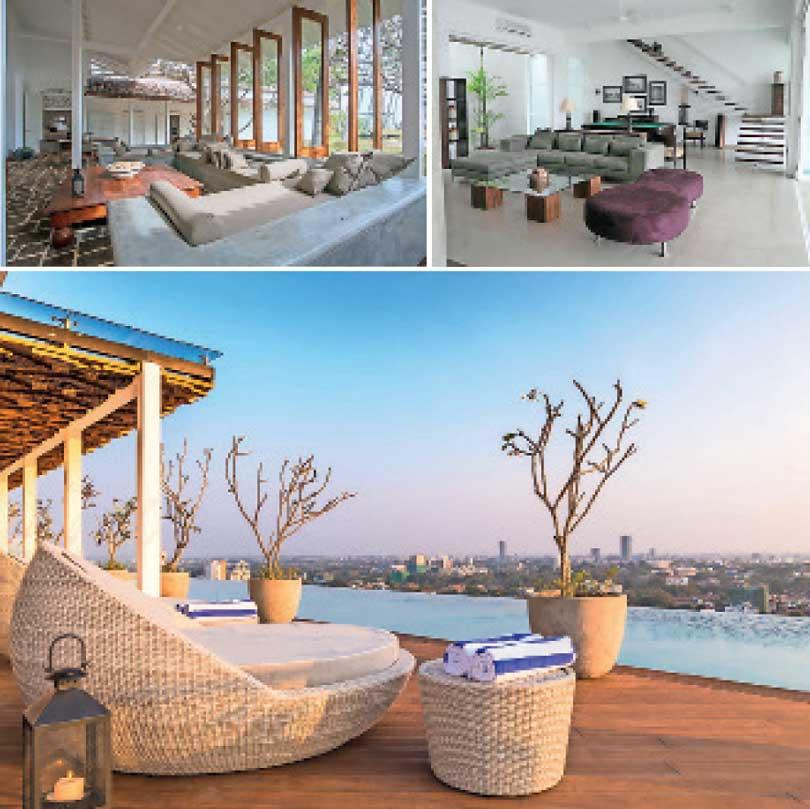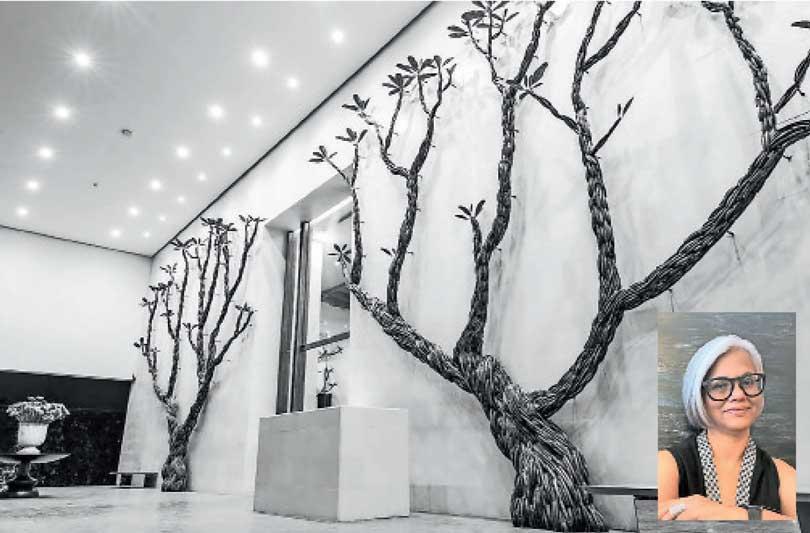
Drawing parallels between traditional crafts and architecture and exploring the challenges both face in this age of extreme consumerism, as well as speed and scale of development, Ruchi Jeyanathan talks about the practice of keeping detail oriented conversations alive through the semantics of construction, an open ear to available elements, bringing the right craftsmen on board and marrying craft and technology. A practising architect and interior designer Ruchi Jeyanathan originally hailing from India graduated from the School of Planning and Architecture, New Delhi, where she started her career in architectural practice before relocating to Sri Lanka in the early 90s. She counts over twenty years of active practice in Sri Lanka, is a director and Head of Design at The Contemporary Design Studio Pvt Ltd. and a self-confessed ‘disruptor’ of design and process oriented conversations in architecture.
Traditional architecture of any place evolved over centuries in response to climate, culture and resources
 Q With western influence rampant in all spheres how do we preserve traditional architectural features?
Q With western influence rampant in all spheres how do we preserve traditional architectural features?
Technology and lifestyles have given access to the same information and influences, especially visual, across the globe. While this has created exciting opportunities in many different ways, it is important to understand our own unique identity and how it relates to the rest of the world. So coming back to your question, I think rather than preserve specific architectural features, we need to understand the concepts, resources and crafts behind traditional architecture and even specific features that continue to speak to our souls. Then explore how these relate to present times and adapt them in a relevant way – to keep our own unique culture and tradition alive.
One instance where this kind of transformation is very apparent – is in the adaptation of the traditional courtyard with time from that in the original Jaffna homes, to the early colonial buildings of the Portuguese and Dutch in Galle, to the subsequent Wallauwas and now in contemporary homes. The materials and form of elements used and the way the interior spaces relate to the courtyard have changed, but the essence of providing light and ventilation and often a place for reflection and connection to divinity are a constant through all these iterations of the courtyard.
Q How do we make traditional architecture relevant in today’s context?
Traditional architecture of any place evolved over centuries in response to climate, culture and resources. There is a wealth of wisdom embedded in it and many lessons which can guide us to respond from our own unique sensibilities , values and physical context, in creating architecture that is reflective of our unique identity. To do this we have to keep our conversations alive around the essence of what informed and influenced traditional architecture, and how that relates to the way we live and work now. At the same time I believe we need to preserve some aspects or examples of traditional architecture, lest we lose our heritage completely to this rapid pace of change. We can do this by adapting examples of traditional architecture to new uses. And also by using old craft elements in new ways. Again, taking the example of the internal courtyard – it is one element that has been debated, reviewed and spoken about constantly. The conversation around it continues to date and challenges us to constantly rethink our position

Q Sri Lanka has many craft forms, from batik and weaving to sculpture and art, what can we do to encourage more youngsters to take up those artisanal crafts as full time employment options?
The most important thing we can do is create opportunity by using our own local arts and crafts, as much as possible. But I also believe that the youth will engage better with them if these art and craft forms are made more relevant to the current times. There is a huge gap of understanding between the demands of the emerging marketplace and the response of traditional craftsmen.
That’s where design plays an important role. It can be that bridge between the marketplace and the craftsman and it can direct cultural transitions in a responsible, respectful and sustainable way.
Design Katha: Craft & Architecture with Ruchi Jayanathan
16 Jan 2021, 12:30 – 12:45 GMT+5:30
Register at https://www.srilankadesignfestival.lk/events/design-katha-craft-architecture-with-ruchi-jayanathan/form
Pics courtesy of Jetwing Colombo Seven

 Drawing parallels between traditional crafts and architecture and exploring the challenges both face in this age of extreme consumerism, as well as speed and scale of development, Ruchi Jeyanathan talks about the practice of keeping detail oriented conversations alive through the semantics of construction, an open ear to available elements, bringing the right craftsmen on board and marrying craft and technology. A practising architect and interior designer Ruchi Jeyanathan originally hailing from India graduated from the School of Planning and Architecture, New Delhi, where she started her career in architectural practice before relocating to Sri Lanka in the early 90s. She counts over twenty years of active practice in Sri Lanka, is a director and Head of Design at The Contemporary Design Studio Pvt Ltd. and a self-confessed ‘disruptor’ of design and process oriented conversations in architecture.
Drawing parallels between traditional crafts and architecture and exploring the challenges both face in this age of extreme consumerism, as well as speed and scale of development, Ruchi Jeyanathan talks about the practice of keeping detail oriented conversations alive through the semantics of construction, an open ear to available elements, bringing the right craftsmen on board and marrying craft and technology. A practising architect and interior designer Ruchi Jeyanathan originally hailing from India graduated from the School of Planning and Architecture, New Delhi, where she started her career in architectural practice before relocating to Sri Lanka in the early 90s. She counts over twenty years of active practice in Sri Lanka, is a director and Head of Design at The Contemporary Design Studio Pvt Ltd. and a self-confessed ‘disruptor’ of design and process oriented conversations in architecture.  Q With western influence rampant in all spheres how do we preserve traditional architectural features?
Q With western influence rampant in all spheres how do we preserve traditional architectural features?